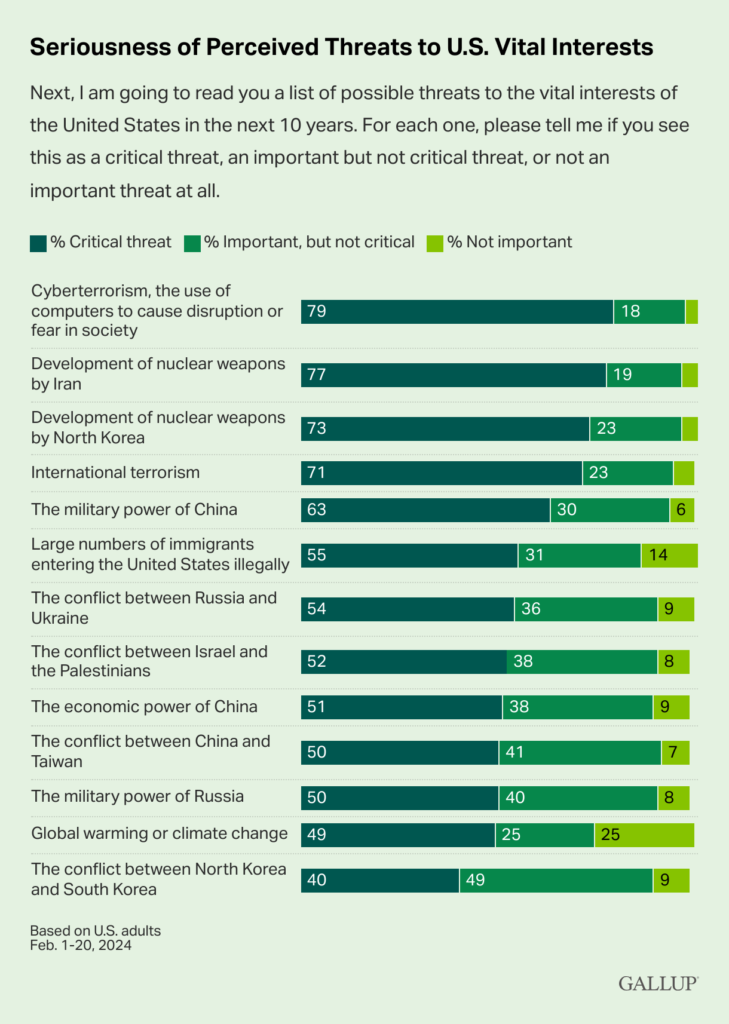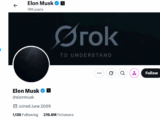By Glynn Wilson –
Public Opinion Analyst –
WASHINGTON, D.C. — There was a time not that long ago when researchers could draw a statistical correlation between what the press in America was reporting about problems facing the country and the world and how the public responded to public opinion survey questions naming the top problems facing the nation.
Those days are long gone now thanks to the hyper partisan divide that grips the United States. There is no longer an American “press” to speak of that influences what all Americans see. The problem was bad enough back when Rush Limbaugh first started spouting his nonsense on the radio, and then Fox News came along and began parading as not just a right-wing, pro-Republican outlet for political opinion. It was designed on purpose as the Pro-American First outlet
But there were still newspapers in most cities and counties running Associated Press stories that reported both sides of at least some stories. Not anymore.
Social media came along and took over the advertising business, putting most newspapers out of business and capturing public attention like nothing that came before.
But somehow public opinion survey companies like Gallup are still in business, trying to keep us informed on what people are thinking about — if not telling us what media people consume to find out what to think about problems.
I still follow this research, since it is one of my academic and journalistic specialties. But I am often disgruntled with the research myself, so try to shine a light on those problems for readers. I do not write about the results of every poll, but I don’t want to totally ignore this research completely, even though I know that many readers are also disgruntled with the results of polls, especially since things seemed to go so wrong in calling the presidential election of 2016.
I light of recent events when cell phone service has been knocked out for many, health care providers have faced massive hacking attacks that has caused big problems for doctors, patients and pharmacies, and then all the Meta social media platforms went down for hours on Tuesday, including Facebook, Messenger, Instagram and Threads, I found it interesting that the top problem in the most recent Gallup poll was the threat of cyberterrorism
More than three-quarters of Americans (79%) say they now view cyber terrorism as the number one problem facing the country, followed by the threat of nuclear weapons (77%). Gallup defined cyber terrorism as “the use of computers to cause disruption or fear in society.” After an initial 73 percent “critical threat” rating for this issue in 2016, concern rose to 81 percent in 2018 and had remained above that level until the latest result.
Of course many respondents name Iran as a top threat, probably because Republican politicians and conservative talk radio and cable television talk shows like to focus on the threat from Iran. This has been true since the Bush-Cheney years, although the Obama administration negotiated a treaty with Iran and the threat of that country developing nuclear weapons was on the back burner, until Donald Trump came along and got elected in 2016, vowing to tear up the treaty with Iran because a Black Democrat got the credit for it.
He did tear it up after taking office in 2017, and Iran started working on its nuclear weapons program again.
People still see North Korea’s nuclear weapons program as a critical threat too, even though Trump cozied up to the dictator there, Kim Jong Un. It is named by 73 percent of the people surveyed, and 40 percent of Americans consider the conflict between North and South Korea still to be a threat, even though it has been a mostly dormant threat for 70 years.
Another 71 percent of Americans name “international terrorism” as a major threat, even though the wars in Iraq and Afghanistan seemed to take the steam out of domestic threats like the attack on the World Trade Center in New York on Sept. 11, 2001.
The mainstream media and the alternative, independent press still talks a lot about the threat from climate change due to global warming from the burning of fossil fuels for energy and transportation, but on all the conservative channels, this very real threat is still being portrayed as a “hoax.”
So now only half the American people name this as a top, critical threat (49%) even though the CIA even considers it the top threat facing national security in the coming years. The 49 percent of Americans who now say they consider global warming a critical threat is down from 54 percent, the lowest in the trend since 2016. The highest percentage viewing it this seriously was 58 percent in 2021, when many news outlets were reporting on out of control wildfires in the west, massive hurricanes hitting the coasts and other natural disasters scientists were saying were caused by climate change.
Only 14 percent of Americans name immigrants entering the U.S. illegally is a top threat, but you would not know that from Trump’s campaign or reporting on conservative media channels and social media groups. As Gallup reported previously, a record-high 55 percent of Americans said they believed that large numbers of immigrants entering the U.S. illegally represented a critical threat.
While Americans consider China to be a threat, that number has declined 13 points over the past year. Gallup speculates that could reflect both Americans’ modestly improved confidence in the U.S. economy over that time as well as recent news about China experiencing an economic slowdown.
The military power of Russia and China and the China-Taiwan conflict are much more likely to be viewed as critical threats today than when Gallup first asked about each in 2004. Concern is now lower for international terrorism and the conflict between North and South Korea compared with the 2004 readings.
About half of Americans (52%) now see the Israeli-Palestinian conflict as a critical threat to U.S. interests, up from 35 percent the last time it was measured, in 2022. However, that level still doesn’t match the high point of 58 percent recorded in 2004.
Partisan Differences
Of course Gallup finds partisan differences in what Republicans and Democrats name as critical threats, without tracking the media consumption habits of consumers.
Large percentages of both party groups, as well as most independents, believe that cyberterrorism and North Korea’s nuclear program represent critical threats to the U.S. About half in each group also see Russia’s military power and the Israeli-Palestinian conflict as critical. Slightly less than half of Republicans and Democrats, as well as a third of independents, believe the conflict between North and South Korea is critical.
Majorities of all party groups agree that China’s military power, Iran’s nuclear weapons program and international terrorism represent critical threats to the U.S., but the rates are much higher among Republicans than Democrats or independents.
Large majorities of Republicans but less than half of Democrats consider the threats posed by immigrants entering the U.S. illegally and China’s economic power to be critical threats. Republicans and Democrats also hold substantively different views on the China-Taiwan conflict, with a solid majority of Republicans but only half of Democrats saying this poses a critical threat.
Democrats (63%) are more likely than Republicans (51%) and independents (50%) to consider the Russia-Ukraine conflict as critical to U.S. national security interests.
And there is a major difference (63 points) between the views of Democrats and Republicans on the seriousness of global warming. This is no surprise considering how the issue is framed by candidates and partisan media outlets
Gallup’s Bottom Line
“The ever-changing nature of global affairs means that Americans’ perceptions of the threat posed by specific countries or regional conflicts vary over time,” Gallup says in its analysis. “Americans are more than twice as likely today as two decades ago to see Russia’s military and the China-Taiwan conflict as critical threats. After subsiding for a period, concern about the Palestinian-Israeli conflict has again flared, nearly matching the prior high. And after a record surge in migrants crossing the U.S. Southern border in 2023, concern about immigration has risen to a new high.”
At the same time, terrorism in its various forms and the prospect of U.S. adversaries obtaining nuclear weapons loom large as global concerns, Gallup concludes, consistently ranking ahead of all other potential threats.
___
Glynn Wilson is an expert on public opinion as an academic researcher and a journalist. He minored in Political Science with a major in Journalism and Communications at the University of Alabama in an undergraduate BA program back in the early 1980s, where he took every class offered related to this specialty. He also spent some time working with the Capstone Poll in those days, run by Political Science Professor Pat Cotter, and journalism professor Jim Stovall. He covered public opinion for newspapers after that for 10 years as part of the beat of covering public affairs and politics, including elections. He then went back to grad school at UA in the mid-1990s. One of his graduate research jobs was to oversee the public opinion lab in the College of Communications, also under the leadership of Stovall and Cotter, who conducted most of the political election polls in Alabama for a couple of decades. Wilson’s academic research specialty was in the area of media effects on public opinion. He later worked toward a Ph.D. in this research, but rather than continue teaching and jump through the final hoop of defending a dissertation at the University of Tennessee, he opted to go back into the news business working for The Dallas Morning News, The New York Times and other publications. He went independent on the web in 2005, and has covered public opinion ever since as one of his many specialty beats.
His Master’s Thesis was a ground breaking study at the time, showing a statistical correlation between media coverage of the environment and public concern for the environment.
Public Attitudes and Press Coverage of the Environment, 1968-1996
___
If you support truth in reporting with no paywall, and fearless writing with no popup ads or sponsored content, consider making a contribution today with GoFundMe or Patreon or PayPal.















